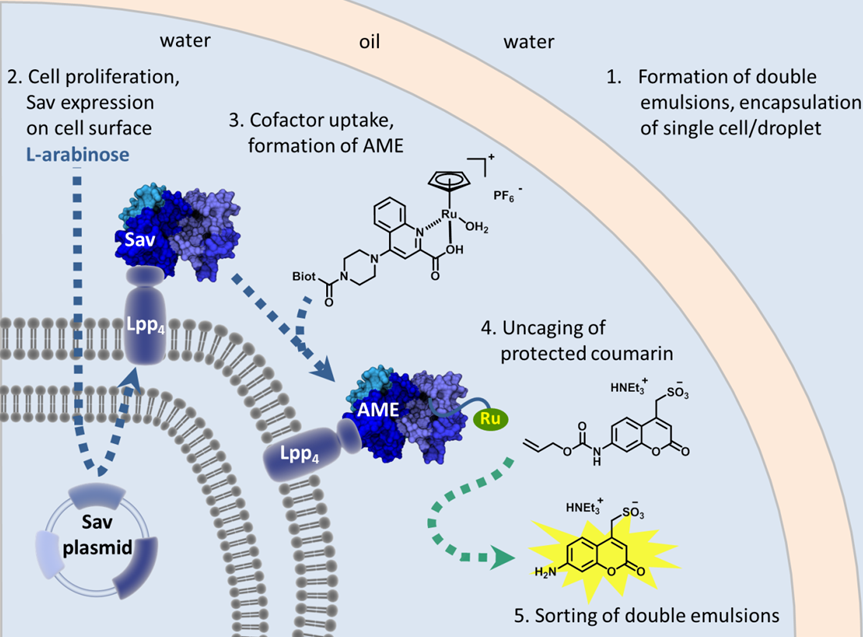Microfluidic Assay for Artificial Metalloenzyme Evolution
Artificial metalloenzymes (AME)[1] allow to extend the reaction scope of natural enzymes, enabling unprecedented chemical transformations in biological systems. The performance and substrate scope of such AME can be tuned by chemical optimization of the metal cofactor or by genetic engineering of the host protein.[2] Incorporation of these AME in cellular environments bears the potential to construct powerful catalytic cascades and the development of high-throughput assays for AME evolution.
Herein, we present a high-throughput microfluidic assay for an artificial allylic alkylase based on the biotin streptavidin technology. Streptavidin (Sav) is displayed on the surface of E. coli as a fusion with an anchoring protein (Lpp-OmpA). Upon binding of the biotinylated ruthenium cofactor [CpRu(Biot-Quinoline)][3] an AME is generated, which can uncage a fluorogenic allyl carbamate protected coumarin. Encapsulation in microdroplets ensures genotype-phenotype linkage and allows high-throughput screening of AME activity.

[1] T. R. Ward, Acc. Chem. Res., 2011, 44, 47-57.
[2] G. Roelfes et al., ChemCatChem, 2010, 2, 916-927.
[3] E. Meggers et al., Angew. Chem,. Int. Ed., 2014, 53, 10536-10540.